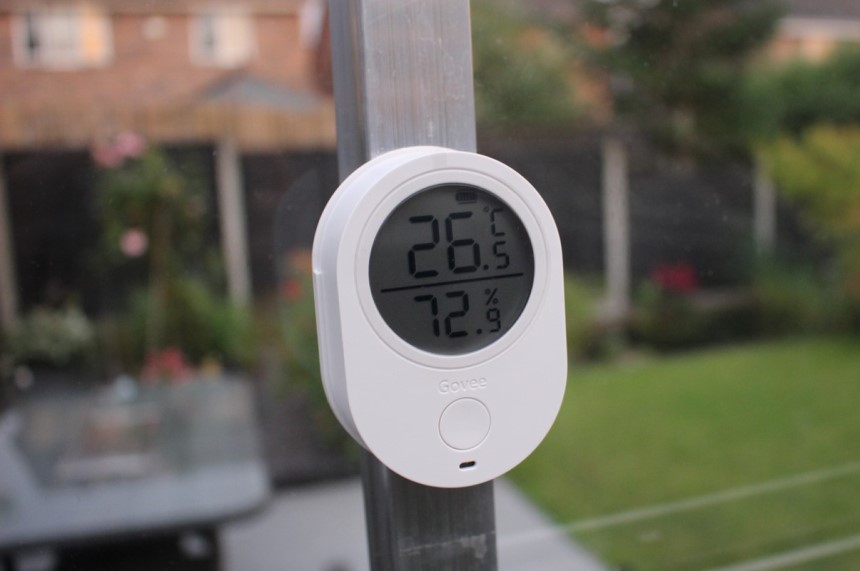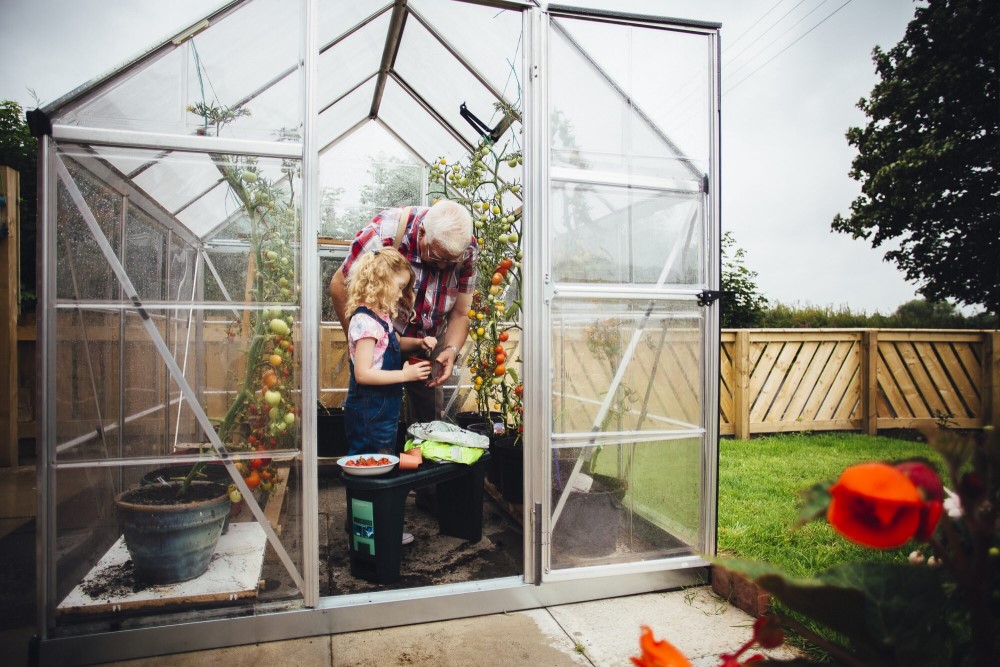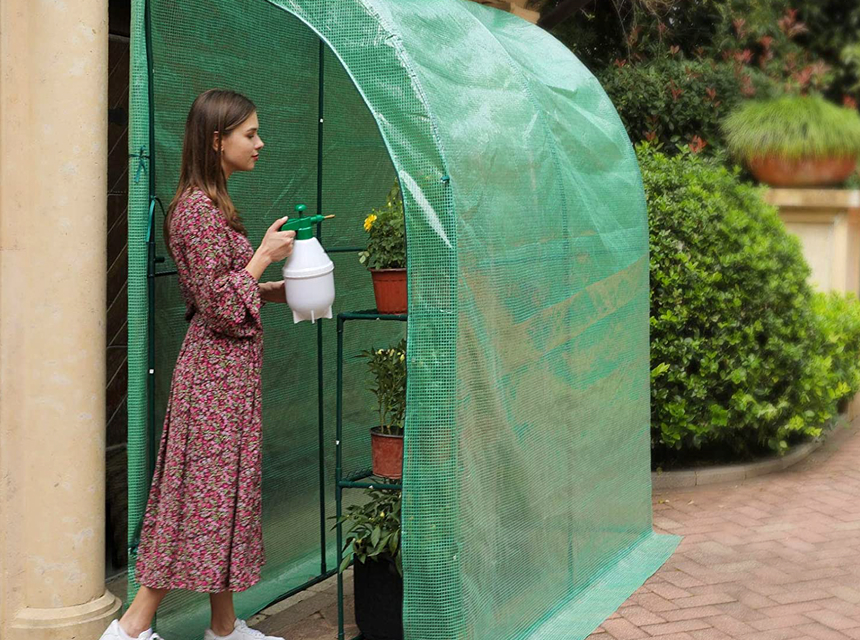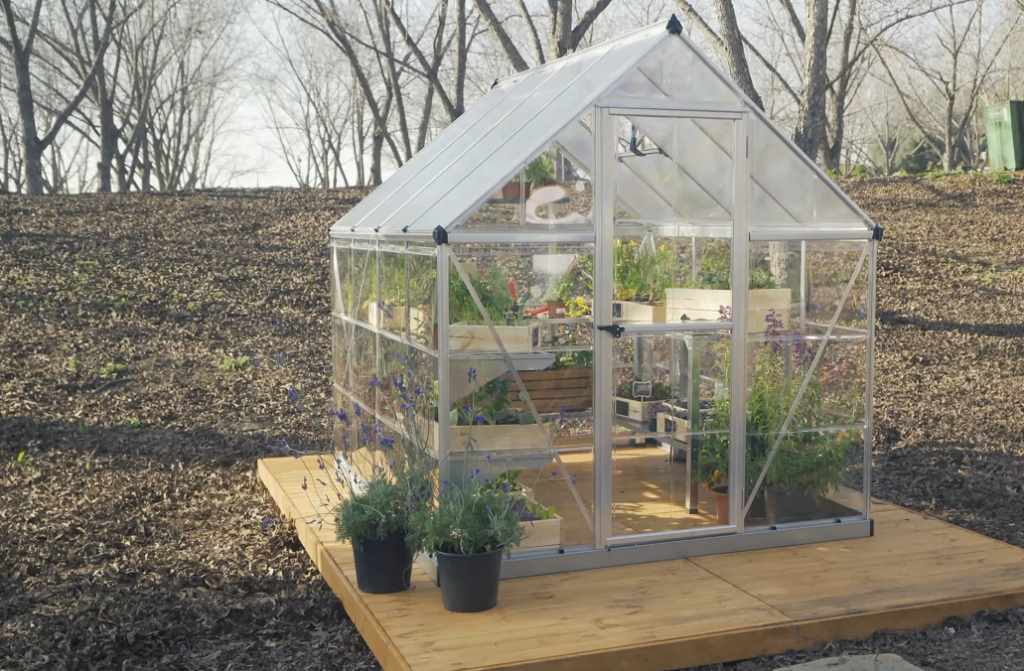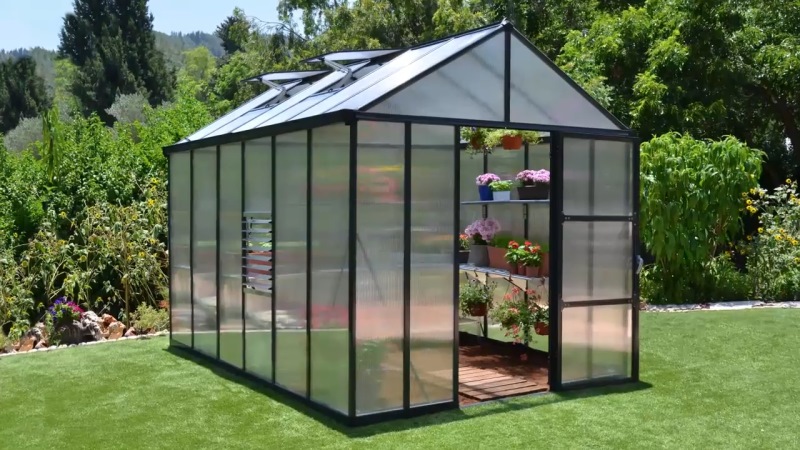
Basic elementary science taught us that a plant needs five essential things to grow; sunlight, air(carbon dioxide), nutrients, water, and space. The world, however, has moved beyond acquiring these essentials the traditional way, that is, growing plants in the open. With a greenhouse, young seedlings can be cultivated to maturity in an enclosed space to survive long, harsh winters weather conditions.
A greenhouse is a warm enclosed space to raise seedlings, especially tropical plants, even in a cool region. Seasonal plants can now be cultivated all year round with the help of a greenhouse. Many ask, “how does a greenhouse stay warm” even in climates or weather where everything around it is either scorched or frozen. A greenhouse is constructed from heat-absorbing materials like glass, plastic.
The easiest way to explain the mechanism of action of a greenhouse is in terms of energy “it converts light energy to heat energy.” A greenhouse is not a green-colored house like the name would imply. A greenhouse is a house that lets in sunlight and prevents heat from escaping.
A greenhouse stabilizes the environmental conditions needed to grow, especially temperature. A greenhouse is built from light-trapping materials like polyethylene Trusted Source polyethylene | Properties, Structures, Uses, & Facts | Britannica Polyethylene, light, versatile synthetic resin made from the polymerization of ethylene. Polyethylene is a member of the important family of polyolefin resins. It is the most widely used plastic in the world, being made into products ranging from clear food wrap and shopping bags to detergent bottles and fuel tanks. www.britannica.com sheets that capture the sun’s light and trap it to be released later to the plants and circulated. These materials do not readily dissipate heat; hence, heat is circulated in the greenhouse and gradually dissipates.
Plants need sunlight to grow. It’s a fundamental principle of photosynthesis. A greenhouse converts light energy from the sun into heat energy. When sunlight enters the greenhouse, it converts the light energy to heat energy, and the greenhouse traps this energy heat because it is made from glass or plastic. The elements/ mechanism of action of a greenhouse can be explained as follows.
The sunlight is one of the factors responsible for answering the question “how does a greenhouse stay warm.” One of the keys to getting enough sunlight in a greenhouse is to ensure it is built or installed in a location free from shades, buildings, or trees. It should be in an open space where it will get all the possible sunlight needed. A greenhouse should get a minimum of six hours of sunlight a day, especially during winter. In highly sunny or hot climates, a partial shade can be used.
Grow lights are now used as alternatives to sunlight in greenhouses and can grow vegetables and plants when sunlight is low or absent, usually in an indoor environment. It is possible to now grow plants from seeds to maturity in an indoor environment with full-spectrum LED grow lights.
There are various ways to generate heat energy in a greenhouse. Light energy is absorbed from the sun and is converted to heat energy in plants and other objects.
The glass/plastic walls and roof of the greenhouse act as thermal insulators that prevent the loss of heat energy via convection. The surface of the glass or plastic roof and walls of the greenhouse slowly loses heat through a process known as conduction Trusted Source thermal conduction | physics | Britannica Thermal conduction, transfer of energy (heat) arising from temperature differences between adjacent parts of a body. Thermal conductivity is attributed to the exchange of energy between adjacent molecules and electrons in the conducting medium. www.britannica.com .
Another way to generate heat in a greenhouse is compost creation Trusted Source compost | Description, Composition, & Process | Britannica Compost, crumbly mass of rotted organic matter made from decomposed plant material, used in gardening and agriculture. Compost provides a wide range of nutrients for plants and adds beneficial microbes to the soil. It is especially used in organic farming, where synthetic fertilizers are not permitted. www.britannica.com or composting. This involves placing compost in the greenhouse. Compost is usually composed of soil, organic material (plant or animal), and water. Heat is generated by the rotting or decay action of the compost as microorganisms break down the materials.
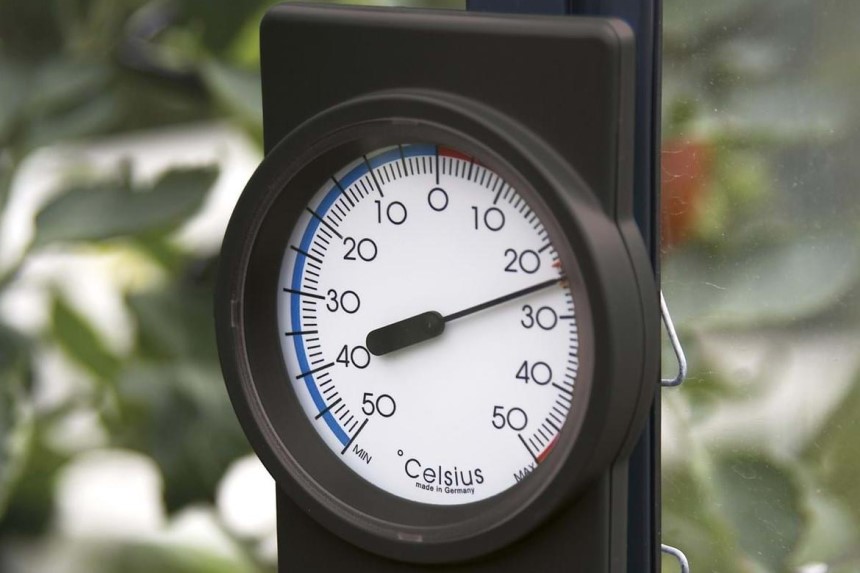
Heat energy in a greenhouse should be controlled. A greenhouse absorbs a lot of light energy, converts it to heat energy, and gradually releases it. When the temperature in the greenhouse is too high, the heat can be let out through the doors and windows of the greenhouse.
A notable way to trap energy in a greenhouse is adding thermal mass or heat sinks. Thermal mass refers to objects that absorb heat energy during the day and release it during the cold hours of the night. Trapping of heat energy is a way to regulate the internal temperature of the greenhouse.
One way to create thermal mass is to place water containers or heat sinks in a greenhouse. The containers should have caps or lids to reduce the rate of heat escape. These containers are then strategically distributed throughout the greenhouse for even heat distribution. The containers can be coated with black paint to increase heat absorption. Black food dye can also be added to the water content. This is because black as a color can absorb heat. These containers trap heat energy during the day and release the energy at night. Another way to create thermal mass is to have bricks or rocks in the greenhouse. Plastic greenhouses like the go sunny walk-in greenhouse have been reviewed by many to trap heat effectively.
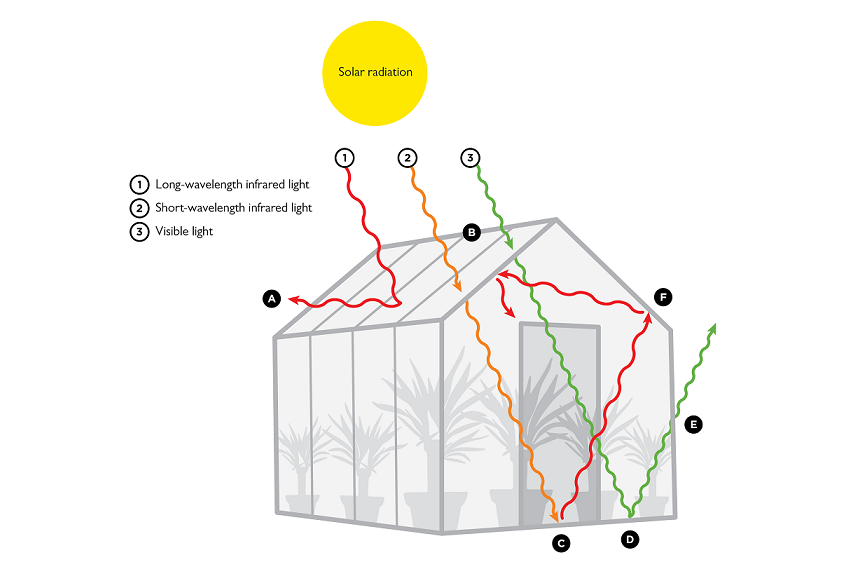
Trapped heat energy in a greenhouse heats up the greenhouse, thus providing the plants with the warmth, they need to grow.
A greenhouse needs to be within the optimum temperature range to grow unhindered. The temperature in a greenhouse can be controlled using the following ways.
A thermometer is simply an object used to measure temperature. The ideal temperature Trusted Source greenhouse | Definition, Types, & Uses | Britannica Greenhouse, building designed for the protection of tender or out-of-season plants against excessive cold or heat. Large greenhouses are important in agriculture and horticulture and for botanical science, while smaller structures are commonly used by hobbyists, collectors, and home gardeners. www.britannica.com of a greenhouse is 77-88⁰F during the day and 60-76⁰F at night during summer. The temperature, however, drops during the winter and should be between 65-70⁰F during the day but not less than 45⁰F at night.
A hanging thermometer or digital thermometer can be installed in the greenhouse to monitor temperature changes.
Many believe the easiest way to control the temperature in a greenhouse is to install heaters. It is a convenient method as the temperature can be set. However, the major con to this method of temperature regulation is that it can be costly to run in terms of electricity bills.
Heaters can be electric or gas-fuelled. Gas-fuelled heaters are resorted to when one does not want to run wires to the greenhouse. Heaters can be programmed to maintain a constant temperature.
Everyone loves to pop bubble wraps. However, bubble wraps serve purposes other than protecting fragile objects and providing entertainment. Bubble wraps can be used to provide insulation in a greenhouse. Insulating a greenhouse reduces heat loss. A layer of bubble wrap is attached to the interior walls.
One of the ways to control the temperature in a greenhouse is the location of the greenhouse. The location of a greenhouse can affect its internal temperature. A greenhouse should be built away from shades of buildings or trees to be exposed to enough sunlight and trap enough heat. It is advised to install or construct your greenhouse in a location void of any form of shade. Consider pruning trees around your greenhouse or even uprooting them if need be.
The size of a greenhouse should be considered before selecting the location to put it. Even with little or no space, you can still own a greenhouse by purchasing small greenhouses that take up minimal space. The home complete mini greenhouse is one of such small greenhouses that have been reviewed to provide excellent value despite the size.
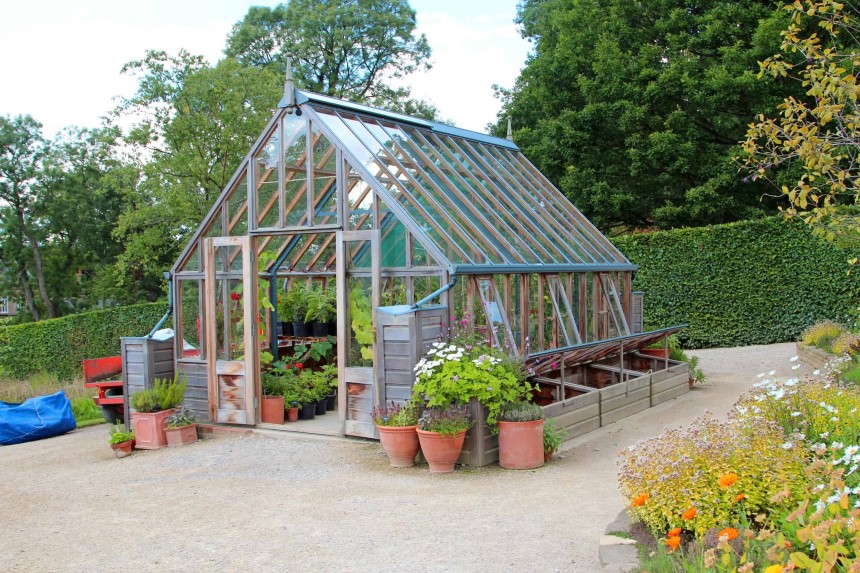
A greenhouse recycles water because heat is trapped. Water is recycled as moisture or humidity. The air in the greenhouse can only hold so much water; else, it results in a drop in temperature. Greenhouses can also get too hot.
One way to ensure ventilation in a greenhouse is to have heat outlets like windows, vents, and doors. On scorching days, the windows and doors can be left open to release heat to prevent the plants from dying due to temperature spikes.
Ventilation is vital to the balance of a greenhouse’s temperature. Ventilation is also essential to the control of water circulation. High humidity in a greenhouse can lead to fungi that can cause mildew, blight, mold, and rots in plants. How much ventilation your greenhouse needs:
A fan can also be used to circulate air in a greenhouse.
The answer to this is simple; only certain kinds of radiation can penetrate the surface of greenhouses (due to the materials they are made from). Light from the sun penetrates a greenhouse trapped as heat energy is a form of thermal radiation. This heat energy is circulated within the greenhouse.
Light can easily pass through the sheets of a greenhouse, but heat, however, does not pass through so well.
The earth can be likened to a greenhouse. Warm air or heat energy on earth is prevented from escaping into space. This trapped air warms the earth’s surface.
Unlike a walk-in greenhouse, which most people are familiar with, smaller greenhouses are now built to be set up indoors. Such greenhouses are perfect for growing pot plants and herbs. Many people who do not have a yard or garden space can still successfully grow plants and herbs they love with the aid of indoor greenhouses.
Greenhouses kits are readily available in different forms and designs to suit various preferences. An indoor greenhouse just by the window might just reveal in a close space the phenomenon of how greenhouses stay warm.
